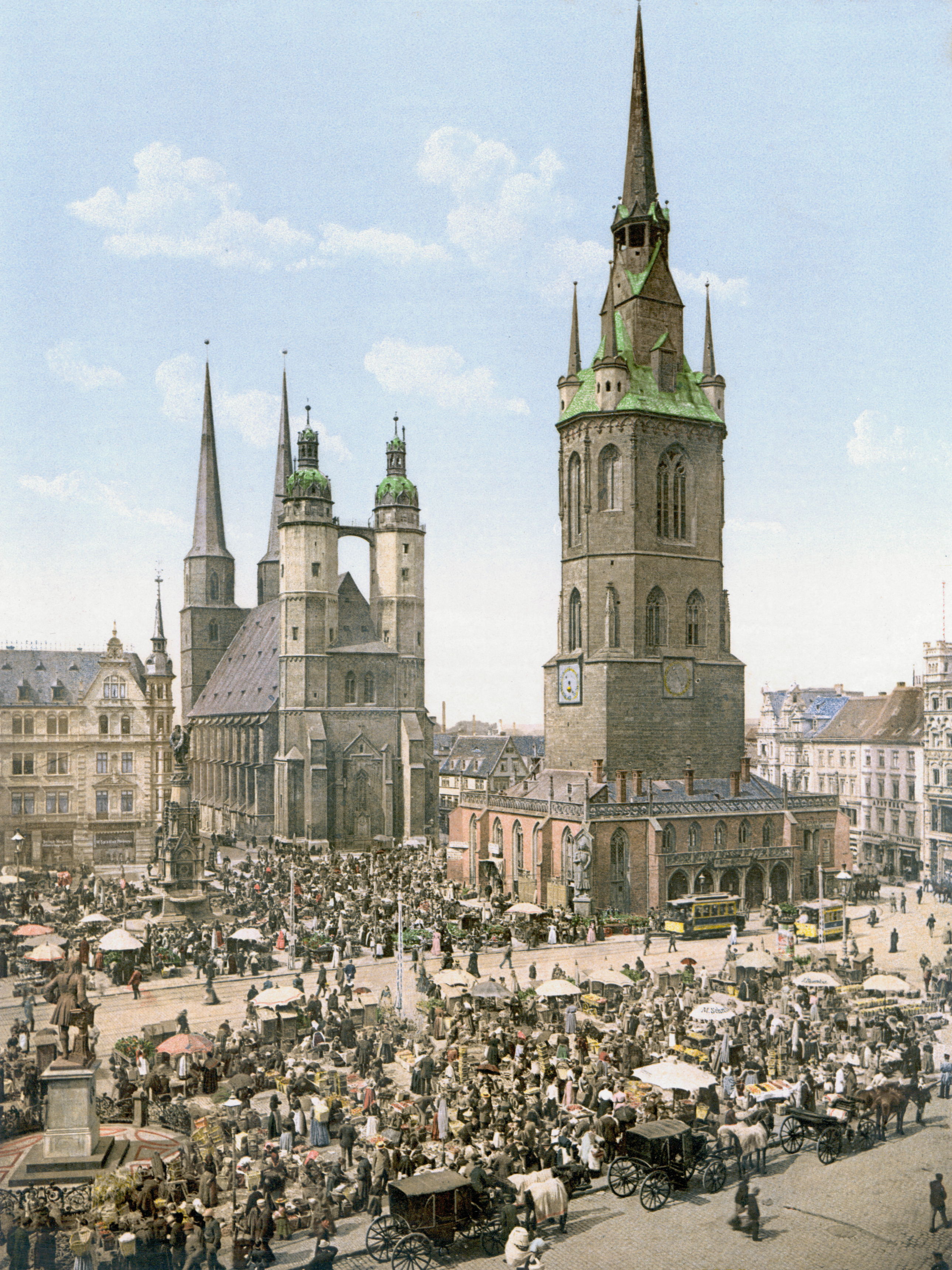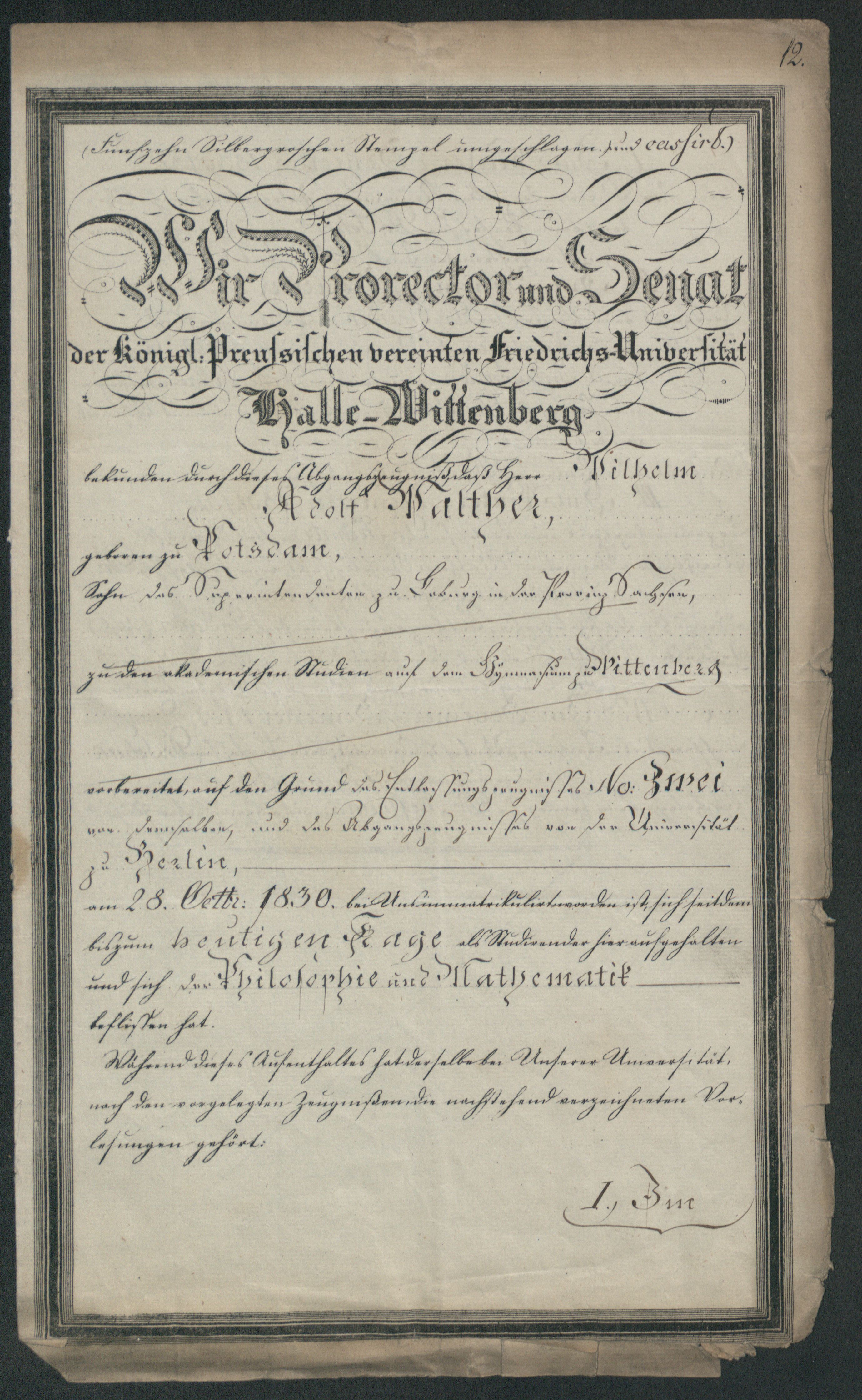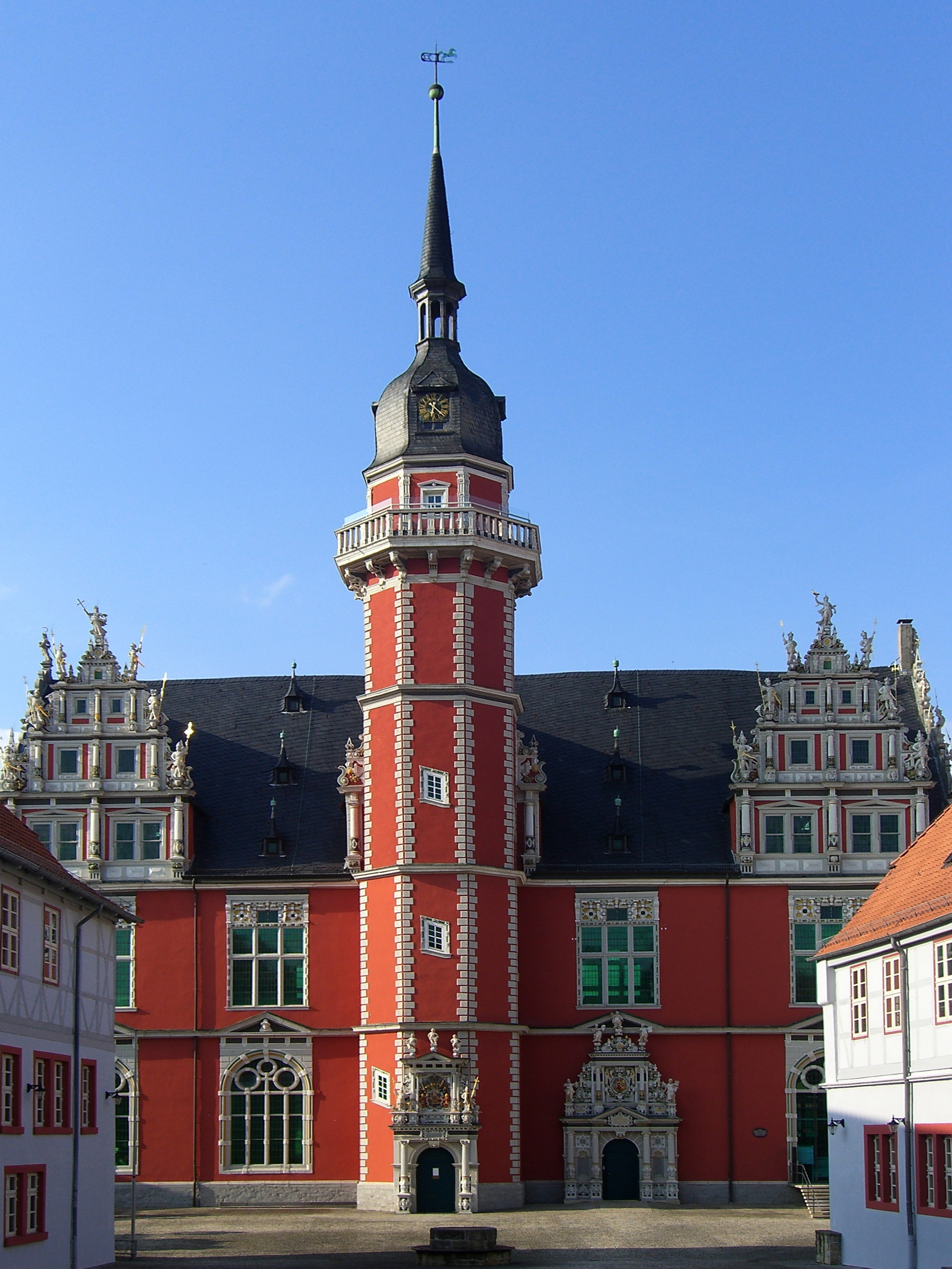|
Georg Simon Klügel
Georg Simon Klügel (August 19, 1739 – August 4, 1812) was a German mathematician and physicist. He was born in Hamburg, and in 1760 went to the University of Göttingen where he initially studied theology before switching to mathematics. Georg Christoph Lichtenberg was a fellow student. His doctoral thesis ''Conatuum praecipuorum theoriam parallelarum demonstrandi recensio'', published in 1763 with Abraham Gotthelf Kästner as doctoral advisor, was a study of 30 attempted proofs of the parallel postulate. It was influential at the time and much cited. Klügel edited the ''Hannöversche Magazin'' for 2 years from 1766, before becoming professor of mathematics at the University of Helmstedt. In 1788 he succeeded Wenzeslaus Johann Gustav Karsten to the chair of mathematics and physics at the University of Halle. He died in Halle in 1812. He remained in correspondence with Lichtenberg throughout his career. Klügel made an exceptional contribution to trigonometry, unifying ... [...More Info...] [...Related Items...] OR: [Wikipedia] [Google] [Baidu] |
Wenzeslaus Johann Gustav Karsten
Wenceslaus Johann Gustav Karsten (15 December 1732 – 17 April 1787) was a German mathematician. In 1768, Karsten published a graphic representation of infinitely many logarithms of real and complex numbers. He was a professor of Mathematics at the Universities of Rostock, Bützow and Halle. Education and early life He was born Neubrandenburg but grew up with his grandfather in Güstrow where he attended high school. From 1750, he studied theology at the Universities in Rostock and Jena but also heard lectures on mathematics and philosophy. In 1754, he returned to Güstrow with the aim to become a priest. As he heard the University of Rostock was in need of a mathematician, he returned to the University of Rostock and also graduated in mathematics in February 1755. The same year, he lectured on mathematics at the same University. Not satisfied with his salary, he unsuccessfully applied as a teacher at high schools in Hamburg and Stettin. After in 1758 the professor of logic ... [...More Info...] [...Related Items...] OR: [Wikipedia] [Google] [Baidu] |
1739 Births
Events January–March * January 1 – Bouvet Island is discovered by French explorer Jean-Baptiste Charles Bouvet de Lozier, in the South Atlantic Ocean. * January 3 – A 7.6 earthquake shakes the Ningxia Hui Autonomous Region in China killing 50,000 people. * February 24 – Battle of Karnal: The army of Iranian ruler Nader Shah defeats the forces of the Mughal emperor of India, Muhammad Shah. * March 20 – Nader Shah occupies Delhi, India and sacks the city, stealing the jewels of the Peacock Throne, including the Koh-i-Noor. April–June * April 7 – English highwayman Dick Turpin is executed by hanging for horse theft. * May 12 – John Wesley lays the foundation stone of the New Room, Bristol in England, the world's first Methodist meeting house. * June 13 – (June 2 Old Style); The Royal Swedish Academy of Sciences is founded in Stockholm, Sweden Sweden, formally the Kingdom of Sweden, is a Nor ... [...More Info...] [...Related Items...] OR: [Wikipedia] [Google] [Baidu] |
19th-century German Mathematicians
The 19th century began on 1 January 1801 (represented by the Roman numerals MDCCCI), and ended on 31 December 1900 (MCM). It was the 9th century of the 2nd millennium. It was characterized by vast social upheaval. Slavery was abolished in much of Europe and the Americas. The First Industrial Revolution, though it began in the late 18th century, expanded beyond its British homeland for the first time during the 19th century, particularly remaking the economies and societies of the Low Countries, France, the Rhineland, Northern Italy, and the Northeastern United States. A few decades later, the Second Industrial Revolution led to ever more massive urbanization and much higher levels of productivity, profit, and prosperity, a pattern that continued into the 20th century. The Catholic Church, in response to the growing influence and power of modernism, secularism and materialism, formed the First Vatican Council in the late 19th century to deal with such problems and confirm ce ... [...More Info...] [...Related Items...] OR: [Wikipedia] [Google] [Baidu] |
18th-century German Mathematicians
The 18th century lasted from 1 January 1701 (represented by the Roman numerals MDCCI) to 31 December 1800 (MDCCC). During the 18th century, elements of Age of Enlightenment, Enlightenment thinking culminated in the Atlantic Revolutions. Revolutions began to challenge the legitimacy of monarchical and aristocratic power structures. The Industrial Revolution began mid-century, leading to radical changes in Society, human society and the Natural environment, environment. The European colonization of the Americas and other parts of the world intensified and associated mass migrations of people grew in size as part of the Age of Sail. During the century, History of slavery, slave trading expanded across the shores of the Atlantic Ocean, while declining in Russian Empire, Russia and Qing dynasty, China. Western world, Western historians have occasionally defined the 18th century otherwise for the purposes of their work. For example, the "short" 18th century may be defined as 1715� ... [...More Info...] [...Related Items...] OR: [Wikipedia] [Google] [Baidu] |
Göttingen State And University Library
The Göttingen State and University Library ( or SUB Göttingen) is the library for Göttingen University as well as for the Göttingen Academy of Sciences and is the state library for the German State of Lower Saxony. One of the largest German academic libraries, it has numerous national as well as international projects in librarianship and in the provision of research infrastructure services. In the year 2002, the SUB Göttingen won the German Library of the Year (''Bibliothek des Jahres'') award. The directors are Thomas Kaufmann, Bela Gipp (Scientific Director) and Kathrin Brannemann (Administrative Director). The library works under a dispersed system, with six branch libraries located in various academic departments, supplementing the central collection housed in the Central Library (construction completed in 1992) on the main campus and the Historical Library Building in downtown. The Historical Building holds manuscripts, rare books, maps, and a significant history-of- ... [...More Info...] [...Related Items...] OR: [Wikipedia] [Google] [Baidu] |
Halle (Saale)
Halle (Saale), or simply Halle (), is the second largest city of the States of Germany, German state of Saxony-Anhalt. It is the sixth-most populous city in the area of former East Germany after (East Berlin, East) Berlin, Leipzig, Dresden, Chemnitz and Magdeburg as well as the List of cities in Germany by population, 31st-largest city of Germany. With around 226,000 inhabitants, it is less populous than the state capital, Magdeburg. With Leipzig, the largest city of Saxony, Halle forms the polycentric metropolitan area, polycentric Leipzig-Halle conurbation. Leipzig/Halle Airport, Leipzig/Halle International Airport lies between the two cities, in Schkeuditz. The Leipzig-Halle conurbation is at the heart of the larger Central German Metropolitan Region. Halle has been known by many names throughout its history. From the 15th to the 17th century: ''Hall in Sachsen''. From then until the beginning of the 20th century, the name Halle an der Saale was used, and still remains a more ... [...More Info...] [...Related Items...] OR: [Wikipedia] [Google] [Baidu] |
University Of Halle
Martin Luther University Halle-Wittenberg (), also referred to as MLU, is a public research university in the cities of Halle and Wittenberg. It is the largest and oldest university in the German state of Saxony-Anhalt. MLU offers German and international (English) courses leading to academic degrees such as BA, BSc, MA, MSc, doctoral degrees, and habilitation. The university was created in 1817 through the merger of the University of Wittenberg (founded in 1502) and the University of Halle (founded in 1694). MLU is named after Protestant reformer Martin Luther, who was a professor in Wittenberg. Today, the university campus is located in Halle, while ''Leucorea Foundation'' in Wittenberg serves as MLU's convention centre. History University of Wittenberg (''Universität Wittenberg'') was founded in 1502 by Frederick the Wise, Elector of Saxony to propagate the principles of Renaissance humanism. The foundation of the university was heavily criticized, especially wh ... [...More Info...] [...Related Items...] OR: [Wikipedia] [Google] [Baidu] |
University Of Helmstedt
The University of Helmstedt (; official Latin name: ''Academia Julia'', "Julius University") was a university in Helmstedt in the Duchy of Brunswick-Wolfenbüttel that existed from 1576 until 1810. History Founded by and named after Duke Julius of Brunswick-Wolfenbüttel on 15 October 1576, the first university of the duchy and the first Protestant university of the northern Holy Roman Empire quickly became one of the largest German universities. In order to train pastors and administrators for work in the Lutheran churches, the duchy needed a university of its own. In 1575, Julius obtained the Emperor's permission to open a university in Helmstedt. One year later the first lectures started. The princes of Wolfenbüttel held the office of the rector, starting with Julius' 12-year-old son John Henry. Tilemann Heshusius was an important early Lutheran theologian at Helmstedt. He developed a clergy network in the region that supported other Helmstedt professors, including Danie ... [...More Info...] [...Related Items...] OR: [Wikipedia] [Google] [Baidu] |
Mathematician
A mathematician is someone who uses an extensive knowledge of mathematics in their work, typically to solve mathematical problems. Mathematicians are concerned with numbers, data, quantity, mathematical structure, structure, space, Mathematical model, models, and mathematics#Calculus and analysis, change. History One of the earliest known mathematicians was Thales of Miletus (); he has been hailed as the first true mathematician and the first known individual to whom a mathematical discovery has been attributed. He is credited with the first use of deductive reasoning applied to geometry, by deriving four corollaries to Thales's theorem. The number of known mathematicians grew when Pythagoras of Samos () established the Pythagorean school, whose doctrine it was that mathematics ruled the universe and whose motto was "All is number". It was the Pythagoreans who coined the term "mathematics", and with whom the study of mathematics for its own sake begins. The first woman math ... [...More Info...] [...Related Items...] OR: [Wikipedia] [Google] [Baidu] |
Parallel Postulate
In geometry, the parallel postulate is the fifth postulate in Euclid's ''Elements'' and a distinctive axiom in Euclidean geometry. It states that, in two-dimensional geometry: If a line segment intersects two straight lines forming two interior angles on the same side that are less than two right angles, then the two lines, if extended indefinitely, meet on that side on which the angles sum to less than two right angles. This postulate does not specifically talk about parallel lines; it is only a postulate related to parallelism. Euclid gave the definition of parallel lines in Book I, Definition 23 just before the five postulates. ''Euclidean geometry'' is the study of geometry that satisfies all of Euclid's axioms, including the parallel postulate. The postulate was long considered to be obvious or inevitable, but proofs were elusive. Eventually, it was discovered that inverting the postulate gave valid, albeit different geometries. A geometry where the parallel postulate do ... [...More Info...] [...Related Items...] OR: [Wikipedia] [Google] [Baidu] |
Abraham Gotthelf Kästner
Abraham Gotthelf Kästner (27 September 1719 – 20 June 1800) was a German mathematician and epigrammatist. He was known in his professional life for writing textbooks and compiling encyclopedias rather than for original research. Georg Christoph Lichtenberg was one of his doctoral students, and admired the man greatly. He became most well-known for his epigrammatic poems. The crater Kästner on the Moon is named after him. Life Kästner was the son of law professor Abraham Kästner. He married Anna Rosina Baumann in 1757 after a 12-year engagement. She died on 4 March 1758, less than a year later, of lung disease. Later Kästner had a daughter Catharine with his cleaning lady. Kästner studied law, philosophy, physics, mathematics and metaphysics in Leipzig from 1731, and was appointed a Notary in 1733. He gained his habilitation from the University of Leipzig in 1739, and lectured there in mathematics, philosophy, logic and law, becoming an associate professor in 1746 ... [...More Info...] [...Related Items...] OR: [Wikipedia] [Google] [Baidu] |





